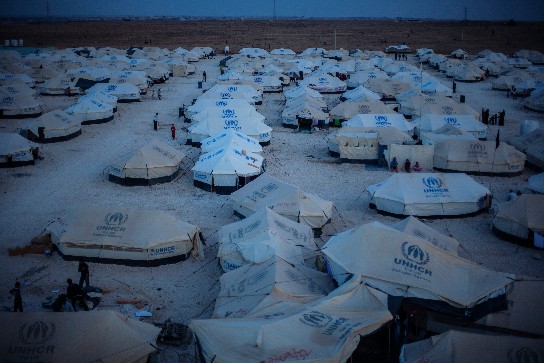
Sustainable Disaster Relief
“In many developing countries, the rate of industrial growth has outpaced the government’s ability to cope with disaster…This trend, along with continuing land degradation, climate change and increasing use of chemicals, is putting more and more people at risk.” UNEP/OCHA
When environmental and natural disasters strike, the first step is to save lives. Environmental concerns often arise long after the immediate chaos, often when unsustainable recovery practices have already been enacted. The United Nations Environment Program (UNEP) and the United Nations Office for the Coordination of Humanitarian Affairs (OCHA) joined forces in 1993 to respond specifically to environmental disasters through the Environment Unit. The Environment Unit works to prevent duplicate responses and optimize their efficiency.
Global warming is increasing the number of natural disasters and leaving communities more devastated than ever. The global community is beginning to see more clearly the overwhelming effects of uncoordinated disaster response efforts. Areas that are already highly vulnerable due to their location, unstable governments, pre-existing conflicts and trouble accessing essential resources are left relying on international aid and non-governmental organizations (NGO’s) for short term recovery and are left on their own for the long-term.
The unsustainability of these efforts stems from the isolation of three important groups of responders: humanitarian, environmental, and military/peacekeeping. The Woodrow Wilson Center, on June 25, 2014, sponsored the event Environmental Dimensions of Sustainable Recovery: Learning from Post-Conflict Disaster Response Experience. The Center pooled the expertise of members across the humanitarian, environmental, and military/peacekeeping sectors of disaster responders in a discussion on what can be done to better coordinate relief efforts.
Anita van Breda of the World Wildlife Fund (WWF) highlighted the separate “silos” relief organizations work within that undermines response efforts. Annica Waleij of the Swedish Defence Research Agency discussed how environmental sustainability is perceived from a disaster relief standpoint. She highlighted how militaries around the world have moved from reactive, to active, to proactive measures in response to natural disasters.
Alice Thomas of Refugees International highlighted managing conflict, particularly the gender-based violence that arises from natural disasters, forcing populations to relocate to refugee camps or already-dense urban areas. Refugees International has stated that 33.3 million people have been internally displaced because of violence, and another 32.4 million because of weather-related incidents. Dislocation and relocation threatens access to the natural resources that make up the livelihood of many global citizens. People who collect firewood for fuel are at risk when they move to an area that has already experienced heavy deforestation, as well as to refugee camps that place burdens on surrounding resources and overcrowded urban areas. Increased competition for resources, political instability, and continual population growth, when mixed with worse and more frequent natural disasters, is also expected to hurt economic growth and development. Uncoordinated disaster response is creating unsustainable situations for already vulnerable regions.
Wendy Cue of the United Nations (UN) discussed the lack of leadership and accountability surrounding disaster response efforts and the need to extend the humanitarian program cycle. Currently, response efforts are based on year-by-year efforts; disasters typically require years, if not decades, of cleanup and rebuilding. This means that communities are left with considerable rebuilding even after first responders leave.
The panel specifically expressed the importance of engaging with local governments and communities. They also expressed the importance of government involvement in relief efforts. The group compared involved governments, such as the Philippines following Haiyan, to those that do not have the coordinated resources or the wherewithal to aid local communities in rebuilding processes, such as Haiti following an earthquake and subsequent cholera outbreak. The communities that respond most effectively to natural disasters are those in which government has the financial resources and political will to rebuild.
Efforts include teaching local citizens the skills to live sustainably, such as composting and kitchen gardens, as well as the danger of burning human waste for fuel and the importance of “building back safer.” At the core of these efforts are good community organizers, those citizens within the locality that can communicate with multiple groups about the importance of their sustainability efforts to their own livelihoods.
Disaster response has never been straightforward. Particularly in a world in which climate change is causing situations that increasingly ravage both stable and unstable regions, sustainable recovery practices are imperative. Constantly rebuilding communities that cannot sustain themselves creates serious security problems for the affected regions and for the world.
Photo: United Kingdom Department for International Development






